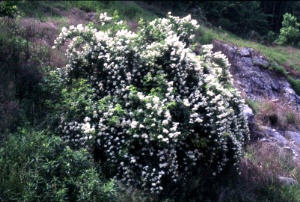
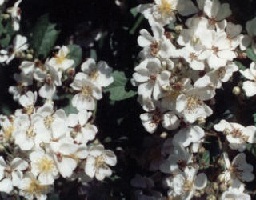
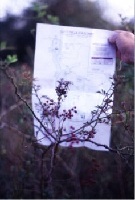
 |
 |
 |
| Fig. 1 A large, healthy beautiful fragrant bush of 'R. Multiflora' | Fig. 3 RRD infected Multiflora setting seeds at Clifty Falls. |
| In East Tennessee 'R. multiflora' is not the problem, it’s simply a symptom of uneconomic farming and farmland bought by and neglected by speculators on the outskirts of cities. Well tended fields wouldn’t have the problem in the first place. Originally, I had hoped RRD was like a forest fire that will pass through an area doing its damage, but allowing one to replant in it’s wake. I have come to realize it is more like a slow burn that will stay with us forever as a continuing source of infection via mites that could ultimately become resistant to our limited arsenal of miticide. As rose growers we simply have to learn to live with it as we have learned to live with Japanese beetles or black spot. |
| Footnotes: |
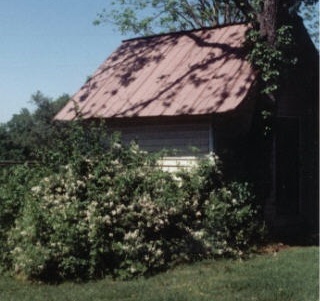
|
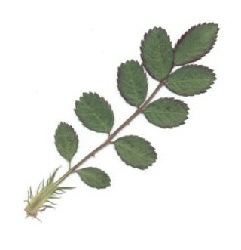
|
| 50 years ago my Granfather purchased a pickup truck bed full of "Rose Hedge", |
| guaranteed to grow quickly into a solid barrier. It seems the neighbors’ boys |
| were pilfering his watermelons. It did grow, and was extremely effective, as I was |
| told many times of the night he had to go out and untangle two unhappy teenagers |
| from his 'hedge', broken watermelons all around. Back in the days when everyone |
| knew what everyone else had, my Mother remembers my Granmother joking that |
| they were the only ones who had planted 'Rose Hedge', and that now it was all over |
| town. My mother had played in those woods since the late 30's, she's certain it |
| simply wasn't there until my Granfather planted it. This 'rose hedge' has small white |
| blooms in profuse clusters, in spring and produces small, round hips that the birds |
| like to eat. Its name, other than rose hedge, is Rosa Multiflora. |
| It can grow huge and has completely colonized the town. Empty lots are impenetrable |
| forests of thorns. It’s everywhere. In the spring when I rode my horse I don't remember |
| not seeing the little white flowers. My mother now lives in my granparents’ house, and |
| her yard is still surrounded by it. Its not just her town, I've seen it all over the area |
| driving down I-95 and one the Parkway. If rosette did hit central Jersey it would be a |
| nightmare, to try to remove and destroy all the wild multiflora would be an impossible |
| task, I shudder to think of it. I wish Gramps had just let the kids have the watermelons. |
| Used with permisson from Sia Marlow |
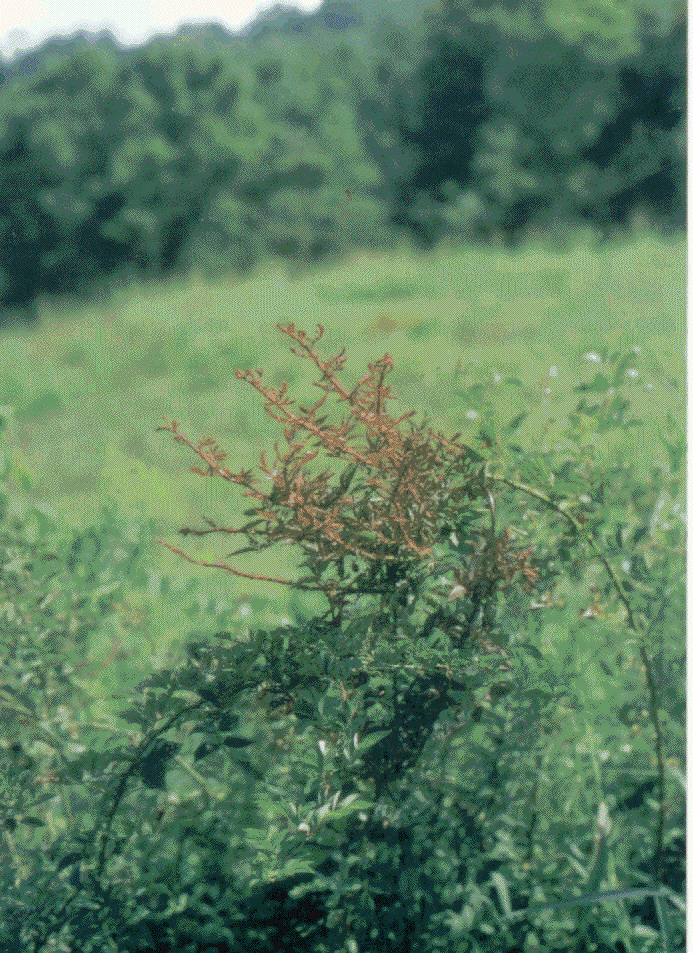 |
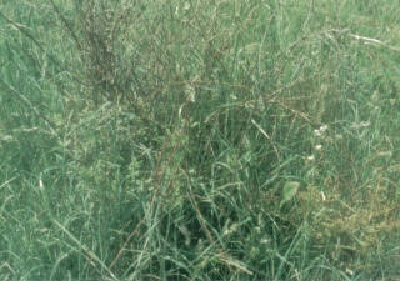 |
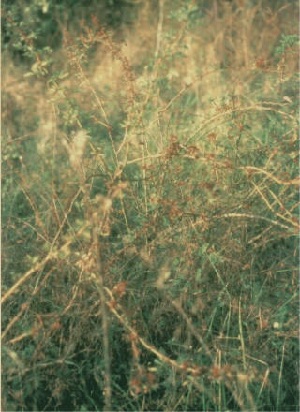 |
| Fig. 5. 'R. multiflora' with many black, contorted, dead canes. New growth emerges at lower right and lower left. | Figure 6. Clifty Falls State Park. Madison Indiana.RRD infected 'R. multiflora' just off the eastern road. This plant had been browsed by the local deer herd that doubtless welcomed succulent new, albeit distorted, growth in late fall. Abundant seeds indicated that this plant had bloomed in Spring 2000. |